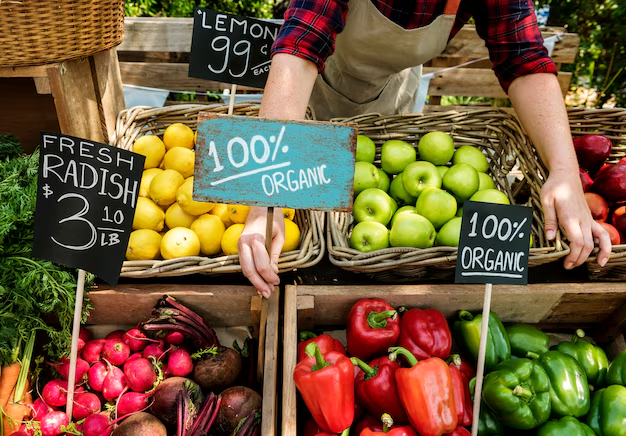Discover the Farmers Market and Local Food Promotion Program: Everything You Need to Know
Picture this: an early Saturday morning, sunbeams dancing through the trees, and a bustling farmers market brimming with colorful produce, artisanal goods, and the comforting chatter of local farmers. Beyond the charm, farmers markets play a crucial role in promoting local economies, and if you're a producer or marketer in this realm, there's a gem of a resource waiting to be discovered—the Farmers Market and Local Food Promotion Program (FMLFPP). Understanding what this program offers can elevate your local business and connect you with valuable funding opportunities.
Unpacking the FMLFPP
The Farmers Market and Local Food Promotion Program is administered by the USDA, designed to increase access to local and regional agricultural products. The program offers two main types of competitive grants:
Farmers Market Promotion Program (FMPP): Supports direct producer-to-consumer market opportunities such as farmers markets, community-supported agriculture (CSAs), and roadside stands.
Local Food Promotion Program (LFPP): Funds projects that develop local and regional food systems, spanning processing, distribution, and storage solutions.
These grants aim to uplift local food businesses, bolster local economies, and increase fresh food access while evolving regional food systems.
Who Can Apply and What Are The Benefits?
Eligibility: These grants are available to a wide range of applicants, including local governments, non-profit organizations, agricultural businesses, and regional farmers associations. The aim is to support diverse, innovative projects that can sustainably benefit local communities.
Benefits: Successful applicants can secure funding to launch new projects, scale operations, and address infrastructure needs. Beyond financial support, grantees often gain invaluable networking opportunities and increased community engagement.
Finding Your Path to Financial Support
The booming interest in local foods opens numerous doors, not just through the FMLFPP, but also via prominent government aid programs designed to lift small businesses and producers. Here’s how you can further explore financial avenues:
Sustainable Agriculture Research and Education (SARE) Grants: Supports sustainable farming, innovation, and practical solutions for regional agriculture.
Rural Business Development Grants (RBDG): Provides funding for rural projects that promote small business growth.
Educational Grants and Scholarships: Look into local educational grants that offer funding and training for agricultural education, nurturing the next generation of farmers and marketers.
Your journey through the farmers market and local food landscape doesn’t have to be a solitary venture. There are credit solutions and financial assistance poised to empower small producers. Explore microloan programs or small business credit facilities designed to provide the financial foundation necessary to support your growth in the vibrant market economy.
Navigating Financial Assistance: A Handy Guide
To help make sense of the array of available opportunities, here’s a breakdown of some key financial support options you might consider:
🎓 Educational Grants
- Local agricultural education programs
- Scholarships for sustainable agriculture studies
💼 Government Aid Programs
- Sustainable Agriculture Research and Education (SARE)
- Rural Business Development Grants (RBDG)
💳 Credit and Loan Solutions
- Microloan programs for small farms
- Small business credit facilities from local banks
🌱 Local and Community Support
- Community development financial institutions (CDFIs)
- Cooperative business networks
Enhancing your familiarity with such programs and resources can transform your business. Whether expanding your market reach, investing in new infrastructure, or accessing educational enrichment, the key is to leverage these opportunities strategically. As you connect deeper with local food systems, remember that these investments are not just in your immediate success but in the sustainability and resilience of your community’s future.

- A Comprehensive Guide To The Senior Companion Program
- Comprehensive Guide To The Biotechnology Risk Assessment Research Grants Program
- Agriculture Innovation Center Demonstration Program: Your Comprehensive Guide
- The Agriculture And Food Research Initiative - Food Safety Challenge Area: A Guide For Consumers
- Agriculture And Food Research Initiative - Childhood Obesity Prevention: A Comprehensive Guide
- Understanding Federal Transit Grants For Rural Areas
- Understanding The Homeless Veterans' Reintegration Program
- Unleashing Opportunities With The YouthBuild Program
- Understanding Native American Housing Block Grants
- Unleashing The Residential Rehabilitation Assistance Program: The Definitive Guide